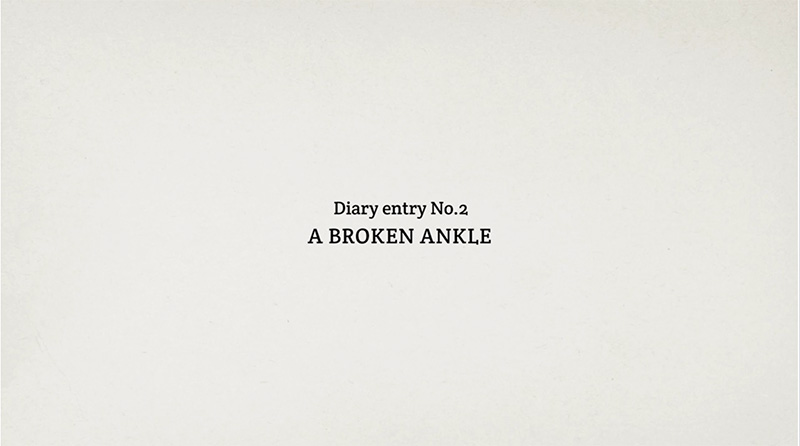Help your patients, turn the page on thrombosis
Thrombosis Diaries
A series of animations that highlight the struggles and symptoms that real patients experience to bring much-needed attention to the problem of missed or delayed diagnosis of DVT and encourage the clinical community to work together to help patients ‘turn the page on thrombosis’.
Supported by a patient education campaign which aims to help patients recognise the symptoms of DVT and seek help quickly.
-

What starts out as DVT in a passenger’s leg, develops into a dangerous pulmonary embolism.
Play Video
-

An ankle injury and a lack of movement during the subsequent recovery period results in DVT.
Play Video
-

A blood clot forms after surgery on a tennis injury and rapid DVT treatment is required.
Play Video
Make an early referral the right referral
Hear from venous specialists about the unique role they play in the management of VTE and its complications. Get advice about achieving early and accurate diagnosis via the optimal referral pathway. Plus, ways to access the best treatment options for the most favourable clinical outcomes.
DVT is a serious global health challenge

One of the most common complications resulting from a DVT is a pulmonary embolism (PE).9
Approximately a third to one half of patients with DVT will have long-term complications (called post-thrombotic syndrome [PTS]).3
One third of people who’ve had a DVT or PE will have another event within the next 10 years.3
A pulmonary embolism can be fatal, with 1 in 4 patients with a PE dying without having experienced any prior symptoms.3
Common risk factors for DVT include:9-11
- Age over 60 years
- Cigarette smoking
- Heart failure
- Obesity
- Pregnancy
- Dehydration
- Certain medicines*
- Blood clotting disorders
- Immobilisation†
- Patients with venous catheters
- Trauma to the limb(s) or general trauma
- A kidney disease called nephrotic syndrome
- Previous DVT
- Surgery in the previous 3 months
…or a DVT can happen for no reason at all!11
*Anti-oestrogen medicines used to treat breast cancer (e.g. tamoxifen) or oral contraceptives/oestrogen therapy.9
†Confined to a bed, or taking a long journey.11
Failure to diagnose and treat can prove costly
DVT presents in so many different ways, and is diagnosed and cared for by multiple healthcare providers and in multiple settings (inpatient and outpatient); therefore the overall burden of DVT is likely to be underestimated.3
Early and accurate diagnosis of VTE is important for preventing deaths and having favourable long-term clinical outcomes.3 Because these events can often be ‘silent’, it is vital that all healthcare professionals be aware of situations that put patients at risk, and provide appropriate tests, prophylaxis and treatment.3
There are two main challenges with making a correct and timely diagnosis:12
This is when the symptoms of an illness or health condition are not diagnosed, or are misdiagnosed. Without the necessary treatment, the illness or condition may worsen and severely affect the patient’s life or even result in death.
Also known as ‘delayed diagnosis’, this is when a patient’s condition is initially missed, with the condition only diagnosed at a more advanced stage. Again, this can prolong the recovery period or reduce the patient’s life expectancy in more serious cases.
Make venous specialists part of your first line of therapy
These treatment options all play a role, and it should be at the discretion of the venous specialist to decide which option to prescribe.
Anticoagulants13-16
Compression therapy13,16
Thrombolytics13,14,16
Interventional procedures are indicated when blood clots are difficult to treat with conventional medicines or if the patient is unable to take certain medications.9 Such interventional procedures include:
Thrombectomy15,16
Catheter-Directed Thrombolysis13,14,16
Angioplasty17
Stent16,17
Inferior vena
cava filters13,16
To achieve the best possible patient outcomes, it is important that in certain cases interventional treatment must be considered as first line therapy, keeping the patient at the centre of the journey, rather than risking a critical delay due to failed suboptimal standard care. Such cases must be evaluated on a patient-by-patient basis.
Patient Resources
This brochure is intended as a resource for existing and at-risk DVT patients to help them better understand what a DVT is, how to recognise symptoms, risk-factors and potentially dangerous complications, as well as the various treatment modalities for DVT.

Getting the full picture of deep vein thrombosis (DVT)
- 1. Rognoni C et al. J Vasc Surg Venous Lymphat Disord. 2021; https://doi.org/10.1016/j.jvsv.2021.01.020. Accessed October 2021; 2. Riporto V-A et al. Journal de Médecine Vasculaire 2020;45:326–33; 3. Beckman MG et al. Am J Prev Med. 2010;38(4S):S495–S501; 4. Bækgaard N, Black S. (ATTRACT trial) Eur J Vasc Endovasc Surg. 2019;57:755–6; 5. Taberna M et al. Front Oncol. 20 March 2020. doi: 10.3389/fonc.2020.00085. Accessed October 2021; 6. Earnshaw JJ, Beard JD. Ann R Coll Surg Engl. (Suppl) 2011;93; 7. NICE Guidelines [NG158]. Venous thromboembolic diseases. http://www.nice.org.uk/guidance/ng158/chapter/Recommendation. Accessed October 2021; 8. Albertsen AE et al. (2015). [A structured multidisciplinary approach ensures correct anticoagulation therapy to patients with atrial fibrillation]. Ugeskrift for laeger. 177. presented as a poster at the 2016 ESC congress; 9. Merck Manual, 19th Edition, Merck, Sharpe & Dohme Corp. NJ, US. 2011; 10. American Heart Association. ‘What is venous thromboembolism(VTE)?’. https://www.heart.org/en/health-topics/venous-thromboembolism/what-is-venous-thromboembolism-vte. Accessed October 2021; 11. DVT (deep vein thrombosis). https://www.nhs.uk/conditions/deep-vein-thrombosis-dvt/. Accessed October 2021; 12. What is medical misdiagnosis? https://www.nhsnegligence.co.uk/delayed-diagnosis-or-misdiagnosis/. Accessed October 2021; 13. Waheed SM et al. Deep Vein Thrombosis. [Updated 2020 Aug 10]. In: StatPearls [Internet]. Treasure Island (FL): StatPearls Publishing; 2021. https://www.ncbi.nlm.nih.gov/books/NBK507708/. Accessed October 2021; 14. Stone J et al. Cardiovasc Diagn Ther. 2017; 7(Suppl 3): S276–S284; 15. Konstantinides SV et al. Eur Respir J. 2019;54(3):1901647; 16. Kakkos SK et al. Eur J Vasc Endovasc Surg. 2021;61(1):9-82; 17. Flumignan R et al. The Cochrane Library. 2015 (1). DOI:10.1002/14651858.CD011468.


